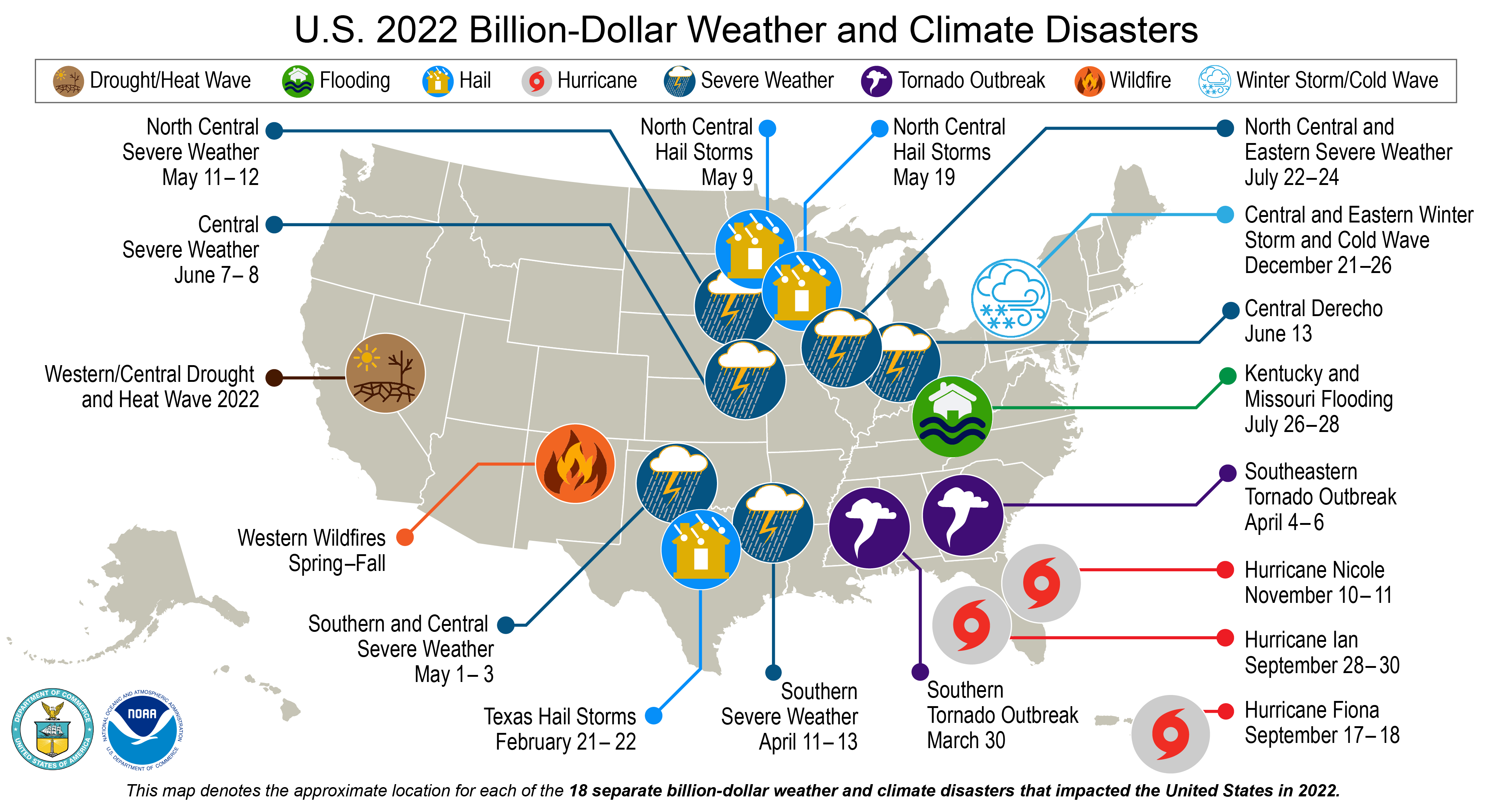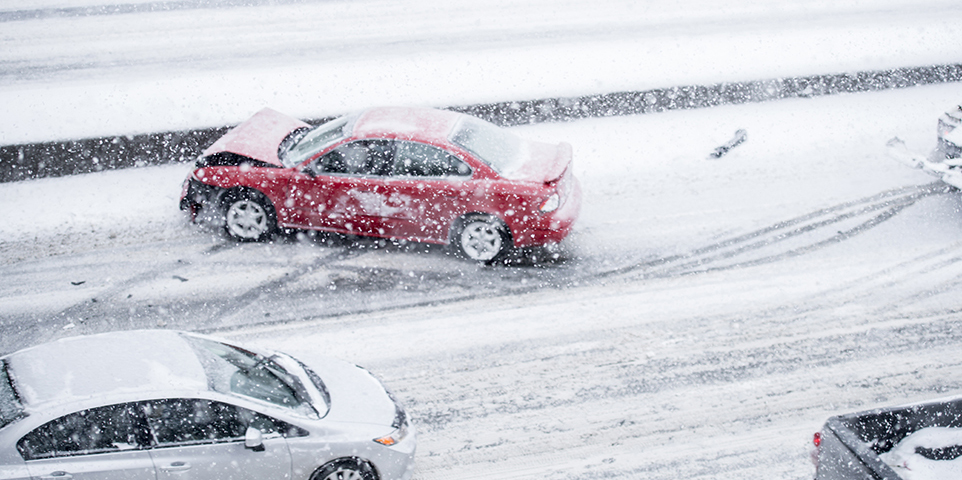Snow Damage Covered by Car Insurance is often covered by comprehensive car insurance policies. Check your specific coverage details to confirm this protection.
Dealing with the aftermath of a snowstorm can be challenging for car owners. Whether it’s the weight of accumulated snow collapsing a roof onto your vehicle or ice-laden branches falling and causing dents, damage can be extensive and expensive to repair.

Fortunately, for those who have comprehensive car insurance, relief is typically available. This form of coverage generally includes events out of your control, like harsh weather conditions affecting
your vehicle. As the first blanket of winter snow covers the streets, knowing your car insurance can handle any snow damage provides great peace of mind. It’s essential to review your policy or speak with your insurance agent to understand the extent of your coverage before the winter season hits.
Car Insurance And Weather Woes
Imagine waking up to a blanket of snow, only to find your car buried underneath. As winter unleashes its fury, it’s crucial to understand how car insurance steps up to protect your vehicle from weather damage.
The Basics Of Car Insurance Coverage
Knowing what your car insurance covers is essential for peace of mind during stormy seasons. Generally, policies fall into three categories:
- Liability Insurance: This does not cover your car if snow damages it.
- Collision Insurance: This pays for damage from hitting another car or object but not weather harm.
- Comprehensive Insurance: This is your go-to for weather-related damage. It covers you against perils like snow, hail, and ice.
| Coverage Type | Does it cover snow damage? |
|---|---|
| Liability Insurance | No |
| Collision Insurance | No |
| Comprehensive Insurance | Yes |
How Weather Can Affect Your Vehicle
A snowy forecast can spell trouble for your vehicle. Be aware of these potential hazards:
- Body Damage: Snow can hide hard objects. Striking these can dent or scrape your car.
- Paint Damage: Ice and melting agents can cause paint to chip.
- Windshield Cracks: Cold temperatures may cause any chip on your windshield to turn into a crack.
Keep in mind, comprehensive coverage is your best ally against the whims of weather.

Snow Damage And Insurance Terms
When winter blankets the world in white, your car may face risks beyond the usual wear and tear. Snow damage to vehicles can be complex, and understanding insurance coverage is crucial. The right car insurance policy may protect against various winter-related damages, but the specifics depend on your policy’s terms. This section explains snow damage and breaks down the types of coverage you might encounter in your policy.
Types Of Damage Caused By Snow
- Body damage: Heavy snowfall can dent or scratch your car’s exterior.
- Glass breakage: Ice and snow buildup can crack or shatter windows.
- Paint damage: Road salt and melting agents can corrode paintwork.
- Engine issues: Cold weather can strain your car’s engine and battery.
- Tire damage: Sliding on ice may harm your tires or alignment.
Decoding Your Insurance Policy
Knowing what’s in your policy helps you understand your coverage. Here’s a guide to decipher your car insurance regarding snow damage:
| Insurance Type | Covered Snow Damage |
|---|---|
| Comprehensive Coverage | Natural events, including snow and ice damage |
| Collision Coverage | Damage from sliding into an object or another car |
| Liability Coverage | Not applicable for your car’s snow damage |
| Uninsured Motorist Coverage | Not directly relevant to snow-related damage |
Check your policy’s declaration page for coverage limits and deductibles. This page outlines the maximum amount your insurer will pay for a covered claim and what you’re responsible for paying out-of-pocket. Always ask your insurance agent specific questions if you’re unsure about your coverage.
Types Of Car Insurance Policies
Navigating through the maze of car insurance policies can be daunting. Yet, understanding the coverage each one provides is key. Especially when it comes to snow damage, it’s imperative to know which policy protects your vehicle.
Liability Vs Comprehensive Coverage
Liability insurance is a must-have; it covers damages to others when you’re at fault.
Yet, it doesn’t shield your car from snow’s wrath. Enter Comprehensive coverage. It steps up to bat for damages outside of collisions. This means snow damage, from dents to a total crush, often falls under its umbrella.
Understanding Collision Insurance
Collision insurance comes into play when your vehicle hits or gets hit by another vehicle or object.
But when it’s about snow’s icy grip toppling a tree onto your car, Collision won’t cover it. Don’t confuse the two; comprehensive is your go-to here.
| Type of Coverage | What It Does | Includes Snow Damage? |
|---|---|---|
| Liability | Covers others’ property and bodily injuries | No |
| Comprehensive | Covers non-collision events | Yes |
| Collision | Covers your vehicle in a crash | No |
Filing A Claim For Snow Damage
Filing a Claim for Snow Damage can be a straightforward process if you understand your car insurance policy and know the proper steps to take. Whether it’s from heavy snowfall, ice accumulation, or a snowplow incident, insurance can cover your damages depending on your coverage type. This guide will help you through the post-damage phase, from initial discovery to the final claims process.
Steps To Take After Discovering Damage
Once you notice snow damage on your vehicle, acting quickly is crucial. These simple yet important steps will set the stage for a smoother claims process:
- Document the damage: Take clear photos or videos from different angles.
- Safe location: Move your car to prevent further damage.
- Policy review: Check your insurance documents for applicable snow damage coverage.
- Immediate report: Contact your insurance provider as soon as possible.
- Repair estimates: Obtain quotes from auto repair shops for the damage.
The Claims Process Explained
Understanding the claims process eliminates confusion and expedites your car’s return to pre-damage condition. Follow these steps:
- Claim initiation: Inform your insurer about the incident online, via phone, or the mobile app.
- Claim adjuster: An adjuster will assess the damage to your vehicle.
- Claim review: Your insurer will review the adjuster’s report against your policy coverage.
- Approval and payment: Once your claim is approved, you’ll receive funds to repair your car.
- Vehicle repair: Take your vehicle to an approved auto repair shop.
Each insurance company has unique procedures, so it’s best to communicate with your specific insurer. Keep all documents readily available for a quick and efficient claims process.

When Snow Damage Isn’t Covered
Imagine waking up to a winter wonderland, but then spotting your car under a pile of snow. It’s important to know that not all snow-related damage is covered by car insurance. Let’s look at when your policy might leave you out in the cold.
Common Exclusions And Limitations
Car insurance policies come with fine print that can exclude certain snow damages. Here are typical limitations:
- Flood damage caused by melting snow may not be included under standard coverage.
- Damage from snow plows might be considered a collision, which requires specific collision coverage.
- Roof collapses from snow weight are often not covered without comprehensive coverage.
Neglect And Preventable Damage
Insurance policies hold owners accountable for preventive measures. Unaddressed issues can lead to denied claims. Below are instances of neglect:
- Ignoring weather warnings and failing to move your car to a safe location.
- Skipping maintenance, like not repairing a weak car roof that can’t hold snow.
- Allowing ice to build up without trying to remove it can cause preventable damage.
The Role Of Deductibles
The Role of Deductibles is crucial when it comes to insurance claims. Deductibles influence both your premiums and out-of-pocket expenses. It’s a specific amount you pay before your insurance kicks in to cover the remaining costs of damage. Understanding deductibles can help you make informed decisions about your car insurance policy, especially when dealing with snow damage. Here’s how they work and how to choose one that suits your needs.
How Deductibles Work
Deductibles are the key to unlocking your insurance coverage. When snow damage occurs, the deductible is your share of the repair costs. For example, if snow causes $2,000 worth of damage to your car and your deductible is $500, you pay the $500 and your insurance covers the remaining $1,500. The higher your deductible, the lower your premium, but it also means more out-of-pocket expenses when filing a claim.
- Pay your deductible first. Your insurer pays the rest.
- Higher deductibles equal lower premiums. This can save you money.
- Lower deductibles mean higher premiums. But they reduce claim costs later.
Choosing The Right Deductible For You
Choosing the right deductible is a balance. Consider both your monthly budget for premiums and your ability to pay the deductible after snow damage or other mishaps. If you can afford higher out-of-pocket expenses during a claim, a higher deductible might be for you. This lowers your premiums and can save money long-term. Conversely, a lower deductible increases your premium but reduces the financial burden after an incident.
| Deductible Amount | Monthly Premium | Claim Cost Impact |
|---|---|---|
| High | Lower | More out-of-pocket |
| Low | Higher | Less out-of-pocket |
Evaluate your finances and imagine dealing with sudden snow damage. It’s a balancing act between predictable costs and potential savings. Choose wisely for peace of mind and a healthy budget.
Enhancing Your Coverage For Winter
As winter approaches, protecting your car becomes crucial. Snow damage can take a toll on your vehicle. Knowing if your car insurance offers you the right protection is key. Enhance your coverage for peace of mind during these frosty months.
Additional Coverage Options
Not all policies cover snow damage. You might need to tweak your insurance. Comprehensive coverage is your best friend against winter woes. It often covers damages from snow and ice, such as dents or broken windows.
- Collision insurance helps if you skid and hit an object.
- Rental reimbursement is handy if your car is in the shop due to snow damage.
- Emergency roadside assistance is perfect for those unexpected winter mishaps.
Preparing Your Car For The Snow Season
Maintenance is your vehicle’s shield against the snow. A well-prepared car faces winter’s challenges better.
- Change to winter tires that grip snowy roads.
- Check your battery since cold weather affects its performance.
- Inspect antifreeze levels to prevent engine freeze.
Consider a pre-winter inspection by a professional. They ensure your car is ready for the cold. Keep an emergency kit in your car. Include items like blankets, a flashlight, and a shovel.

Real-life Scenarios And Coverage
Understanding your insurance coverage is key, especially when it comes to unpredictable snow damage. Real-life incidents paint a clear picture of what to expect and prepare for. Get to know the ins and outs by diving into the world of snow damage claims through real examples.
Case Studies Of Snow Damage Claims
John’s Heavy Snow Ordeal: A blanket of snow shattered John’s car windshield. His comprehensive car insurance took care of the repair costs.
Emily’s Sliding Mishap: Ice caused Emily’s car to slide into a post. Collision coverage helped her repair the bumper.
Frank’s Roof Collapse: Frank’s garage roof succumbed to the weight of snow, damaging his car’s roof. This scenario was covered since Frank had comprehensive coverage.
Learning From Others’ Experiences
- Check Policy Details: Each story teaches us to know our policy intimately. Ensure you’re covered for snow-related incidents.
- Understand Your Deductible: Knowing your deductible amount can prepare you for out-of-pocket expenses before insurance kicks in.
- Document Everything: In any damage claim, documentation is your strongest ally. Take photos and keep records for a smoother claims process.
Saving On Snow Damage Repairs
Harsh winter weather can wreak havoc on cars. Many drivers wonder about the costs associated with snow damage repairs. Understanding coverage options and how to manage repair expenses is crucial. This section provides tips to cut down repair costs effectively.
How To Reduce Repair Costs
Snow damage can lead to unexpected expenses. To spend less on repairs, consider the following:
- Preventive Measures: Regularly maintain your vehicle to prevent costly damage.
- Deductible Savings: Set aside funds for your insurance deductible to avoid financial strain.
- DIY Fixes: For minor issues, do-it-yourself repairs can save money. Always ensure safety first.
- Insurance Coverage Check: Know your policy details to ensure snow damage is covered.
- Comparative Shopping: Get estimates from different shops to find the best repair prices.
Finding A Reliable Repair Service
Selecting the right repair service is crucial for quality and savings. Here’s how to find a dependable one:
- Research: Look for certified technicians with good reviews.
- Referrals: Ask friends and family for recommended shops.
- Warranties: Choose services that offer guarantees on repairs.
- Quality Parts: Ensure they use appropriate parts for your car model.
| Shop Name | Certifications | Warranty | Customer Reviews | Price Range |
|---|---|---|---|---|
| AutoFix Masters | ASE Certified | 1-Year | 4.5 Stars | $100 – $500 |
| Reliable Repairs | A+ Rated BBB | 6-Months | 4.7 Stars | $120 – $450 |
| QuickFix Hub | AAA Approved | 1-Year | 4.3 Stars | $95 – $400 |

Preventing Snow Damage Before It Happens
Wintertime brings joy with snowfall, but it’s not all fun for your vehicle. Snow damage can be costly unless you have the right car insurance. Prevention is always better than a cure. So, let’s look at ways to shield your car from the icy grasp of winter.
Effective Preventive Measures
Simple steps can save your car from the ravages of snow and ice. Here’s how:
- Invest in a good car cover that’s specially designed to withstand snow.
- Keep your vehicle in a garage or under a shelter whenever possible.
- Clear off snow promptly with a snow brush or ice scraper.
- Apply a wax coating before winter to protect the paint job.
- Use antifreeze in your windshield washer fluid.
Importance Of Regular Vehicle Maintenance
| Maintenance Task | Benefits |
|---|---|
| Battery Check | Ensures car starts in cold weather |
| Tire Inspection | Improves traction on icy roads |
| Fluid Levels | Prevents freezing and engine wear |
| Brakes | Maintains stopping power in snow |
Don’t skip regular check-ups and servicing during winter. It not only extends your car’s life, but insurance claims are less likely when your car is in top condition.
Understanding Your Policy Before Winter Hits
Winter weather can surprise you with its fierceness. Snowy conditions pose real threats to your car. Before heavy coats and boots come out, understanding your car insurance policy is a must. Does it cover snow damage? Let’s dive into reviewing and updating your policy to ensure your car has the protection it needs for the cold months ahead.
Reviewing And Updating Your Insurance
Start with your policy’s declarations page—the one that outlines coverage. Look for comprehensive coverage; that’s what typically protects against weather damage, including snow and ice incidents. Not all policies automatically include this, so make sure yours does. Remember, standard liability won’t cover snow damage to your car.
Consider these steps when reviewing your insurance:
- Read the fine print for snow-related exclusions.
- Check the deductible amounts.
- Look for coverage limits;
If you live in an area prone to severe winter weather, updating your coverage makes sense. Think about increasing limits or reducing deductibles. Costs may go up, but so does peace of mind.
| Type of Coverage | Protection Offered |
|---|---|
| Comprehensive | Weather damage, vandalism, theft |
| Collision | Damage from accidents, regardless of snow |
Consulting With Your Insurance Agent
If reviewing insurance feels confusing, reach out to your insurance agent. These professionals clarify coverage details and recommend the best policies for snow damage. Ask them about:
- Specifics of snow and ice damage coverage.
- Process for filing a winter-related claim.
- Possible discounts for winter-proofing your vehicle.
Pro tip: Schedule this chat before winter season hits in full force. Taking steps to understand and possibly enhance your policy means fewer icy surprises. You’ll feel confident your car is ready to face the snow.
Conclusion: Navigating Snow Damage And Your Car Insurance
As winter casts its chilly spell, your vehicle faces risks like icy roads and heavy snowfall. Understanding your car insurance policy ensures you stand prepared for snow damage. It’s time to gather those key insights that can fortify your defense against the perils of winter driving.
Key Takeaways
- Comprehensive coverage is your ally against snow damage.
- Specific snow-related incidents such as ice falling on a car are usually covered.
- Not all policies are equal—review exclusions to avoid surprises during a claim.
- File promptly and provide evidence to smoothen the claims process.
Staying Fully Protected During Winter
Securing the right coverage before winter hits is crucial. Here’s how:
- Review your policy annually with your agent and update it as needed.
- Understand the terms and conditions, including snow damage clauses.
- Create a winter emergency kit for your car with essentials.
- Consider additional coverage options like roadside assistance.
Remember, proactive measures and understanding your car insurance goes a long way in protecting you and your vehicle from the ravages of winter weather. Stay safe and stay insured!
Is snow damage covered by car insurance in california
In California, snow damage to your car can be covered by your car insurance, but it depends on the type of coverage you have. Comprehensive coverage, which is optional but highly recommended,
typically covers damages caused by natural events, including snow and ice. This can include damages from falling branches due to heavy snowfall, hail damage, or other weather-related incidents.


